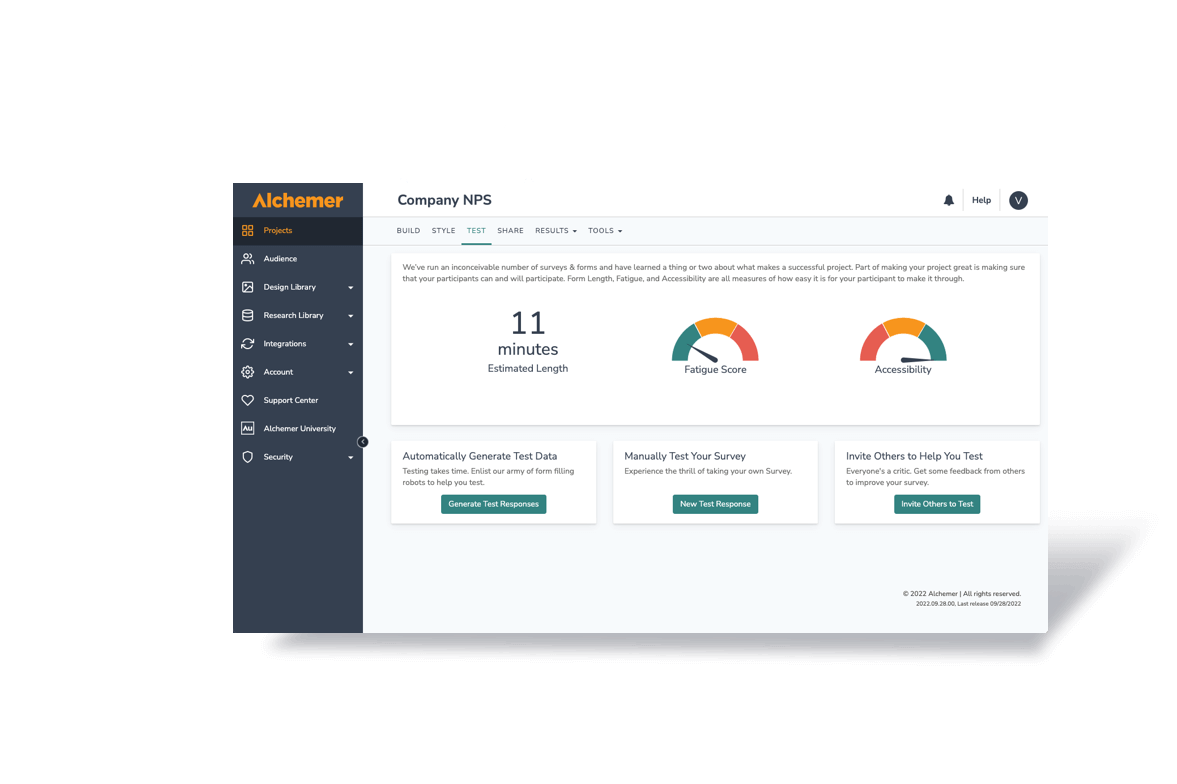The day-to-day craziness of marketing can sometimes prevent us from pausing long enough to examine the big picture. But market research surveys can provide valuable insights into the big picture. Without the full view that results from market research surveys, we risk steering into uncharted territory without a map.
Even with tight deadlines and social media distractions, we must seek unbiased customer feedback.
These six types of surveys are what savvy marketers use regularly to guide their company’s ships to marketing success.
Types of Surveys to Measure Brand Awareness
Generally speaking, marketers conduct these surveys to position your brand relative to your competitors
The goal is to find out how many people in your target demographic know your brand versus your competition. Identify the source of their information and the sentiment they attach to your brand’s image.
There are four primary avenues of investigation in these types of market research:
- General Brand Awareness: People are more likely to buy a brand they can recall spontaneously. They are less likely to choose a brand that requires prompting.
- Brand Usage: Common factors in measuring brand usage include how recently consumers have engaged with your product. It also considers how often they use it and their total spending in both the brand and product categories.Marketers can use brand usage to measure market share as well.
- Brand Attitudes and Perceptions: Conducting these surveys provides insight into your audience’s beliefs about your product’s attributes and benefits. It also reveals their views on your company’s strengths. You may also ask questions related to perceptions about price and value.
- Purchase Intent: Without questions gauging the intent to buy market research can’t be predictive of actual purchase behavior. Ensure you can establish a direct connection by measuring your respondents’ likelihood to buy a brand. Also, assess their chances of switching to a competitor. Include context related to the product or brand. Also consider the reason for purchase, the timing, the channel, the price, and any other factors that might affect the intent to buy.
Gauging Customer Satisfaction Levels With Surveys
Customer satisfaction scores can be deceptive. Many customers rate themselves as “satisfied” or “very satisfied” right before switching to a competitor. Despite this, it remains crucial to stay connected with your customers through these surveys.
To achieve the best results, offer these surveys in the right context. Additionally, ensure you react to the responses appropriately.
First ensure that you’re setting the stage the right way by considering the 5 most influential factors for increasing responses to customer satisfaction surveys:
- Target Audience: Survey only customers who have used the new product for accurate market research. Or your interest may lie only in a particular geographic area. Whatever the goal of your research, make sure you are reaching out to the right segment of your audience.
- Survey Frequency: Survey fatigue is unfortunately an almost ubiquitous cultural phenomenon. Your respondents are likely to already be skeptical of surveys. Make sure you’re not abusing their relationship with your brand by surveying them too often.
- Timing: Most of these types of surveys relate to a customer’s purchase experience. If this is the case, make sure to offer the survey as close to the point of sale as possible. Kiosks near a checkout, a scannable QR code, or a tablet at the store exist can all help improve the survey taking experience and increase your response rate.
- Perceived Benefit: Customers need to know what benefits they’ll receive before deciding whether to take a survey. Assure respondents that their feedback is relevant, promise to act on it, and then follow through!
- Incentive: Sweeten the pot by offering those who fill out your survey the chance to win a prize. Incentives can lower your negative feedback rates. Conduct market research without incentives to observe response differences and adjust your strategy accordingly.
Creating a Fair and Effective Survey Environment
Ensure you have a solid system for collecting data from customer satisfaction surveys. You also need to create an environment where your employees are comfortable administering surveys.
Some companies use these surveys to penalize employees. They may also tie promotions and benefits directly to customer feedback.
This can sound like a good way to ensure that employees are giving outstanding customer service. However, in reality it can dramatically skew your survey data. Employees will encourage customers only to fill out the surveys with the highest possible scores. They may even withhold the survey from dissatisfied customers to protect their own ratings.
Obviously, these practices will give you an inaccurately rosy view of your customers’ sentiment. It will prevent these market research surveys from doing their jobs.
Market Research Surveys to Measure Customer Attitudes and Expectations
If you’re trying to determine exactly how to measure your customers’ attitudes, market research studies can help guide you there too.
Before asking customers if they’re satisfied, first understand their expectations for an experience with your product or service. This knowledge is crucial for accurate feedback. This will help you not only create a more impactful customer satisfaction survey, it can also guide you in make changes to your brand.
You can then track what, if any, impact these changes had in customer attitudes over time.
Attitude and expectation surveys help drive the creation of customer satisfaction monitoring systems. They also provide insights into your website’s performance, service policies, potential names for new divisions or products, and employee attitudes.
Product Research Types of Surveys
Research into customers’ attitudes and expectations often extends into physical product research as well.
Questions on these types of surveys cover a wide variety of product attributes, including:
- Performance in Relation to Expectations: This is a balancing act for marketers. We aim for our products to exceed customer expectations while also positioning them as superior to competitors’ offerings. Market research gives us insight into how well we’re doing in relation to what our customers expect.
- Durability: A great return, refund, or exchange system is vital for physical products. However, it’s ideal if customers never need to use it. You want to keep an eye on your audience’s attitudes about product durability, because it can directly impact repeat purchases.
- How Well a Product Conforms to Specifications: For high-end goods, track how well you communicate product specifications to customers. Clear communication helps ensure that customers understand what they are purchasing. If there is a disconnect between marketing materials and customers’ perceptions, you should address it right away.
- Features: Your product may have twice as many features as the competition. If your audience doesn’t know about them, they aren’t doing you any good. Conducting product research can help you hone your marketing message to draw attention to your best features.
- Reliability: This component of product research is, like durability, closely related to repeat purchase intent and brand loyalty. Ensure that customers perceive your product (and customer service, if applicable) as utterly reliable in case of problems
- Serviceability: And, speaking of problems, track how customers feel about getting your product taken care of. If they can only fix things via mail and shipping takes 6 weeks each way, customers will rate your serviceability poorly.
Market Research Surveys to Perform a Competitive Analysis
There’s a certain amount of stalking that goes on between close competitors. Glancing around at what others are doing can be a good source of ideas. But don’t forget that even during competitive analysis research your customers need to be your focus.
A few things you may want to consider asking during this type of market research are:
- How do buyers in your market research a purchase?
- Who’s most prominent in that research process: you or your competition?
- Are there content types that carry more weight than others during research?
- Does your marketing address those most important types of content? Does your competitor’s?
- When and how do buyers want to interact with vendors?
- Identify any brand awareness issues with your competition that you need to address.
Determining Habits and Uses of Core Customer Group
Try to gain insight into consumer habits and trends and see where you (or competitors) belongs in those processes.
These types of surveys can reveal new opportunities where you could become a part of untapped habitual behavior. They can also help your marketing team identify new habits that you could create to start a new need for your product.
Conclusion: Make Market Research a Habit
Use a wide variety of market research surveys to maintain a comprehensive view of the environment in which your product exists. This approach helps you avoid losing sight of important contextual factors. The daily tasks of email, writing, and social media are important, but using surveys to routinely reach out to your customer base is also a crucial marketing to-do.





